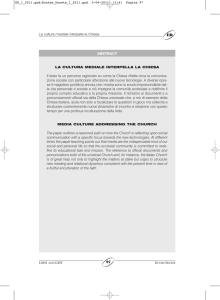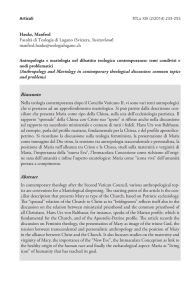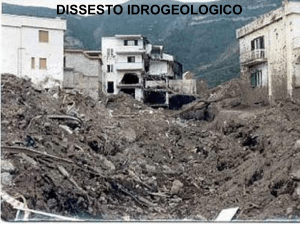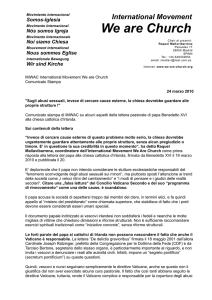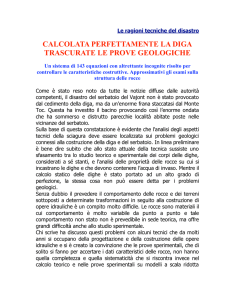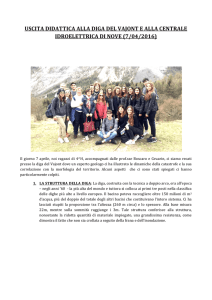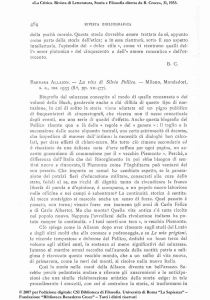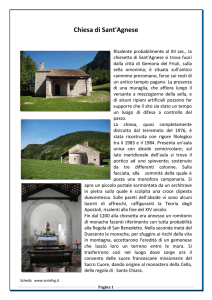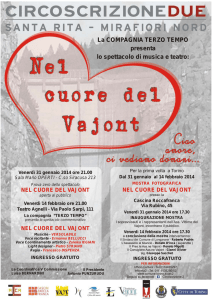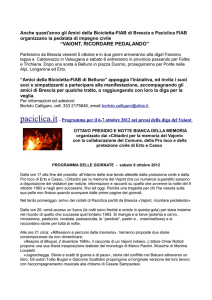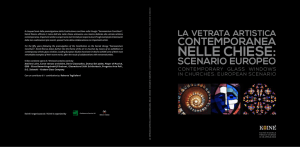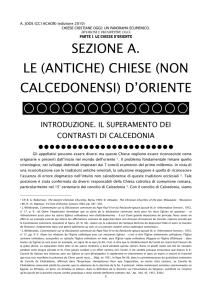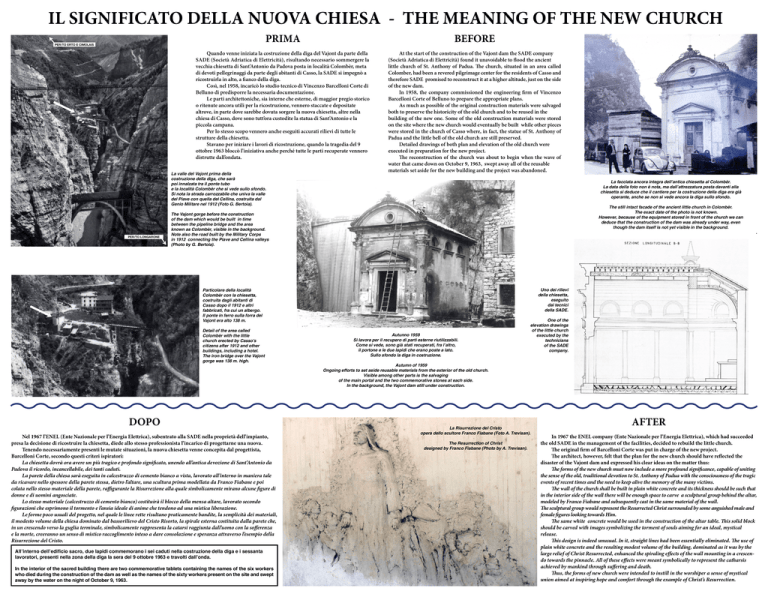
IL SIGNIFICATO DELLA NUOVA CHIESA - THE MEANING OF THE NEW CHURCH
PRIMA
PER/TO ERTO E CIMOLAIS
Quando venne iniziata la costruzione della diga del Vajont da parte della
SADE (Società Adriatica di Elettricità), risultando necessario sommergere la
vecchia chiesetta di Sant’Antonio da Padova posta in località Colombèr, meta
di devoti pellegrinaggi da parte degli abitanti di Casso, la SADE si impegnò a
ricostruirla in alto, a fianco della diga.
Così, nel 1958, incaricò lo studio tecnico di Vincenzo Barcelloni Corte di
Belluno di predisporre la necessaria documentazione.
Le parti architettoniche, sia interne che esterne, di maggior pregio storico
o ritenute ancora utili per la ricostruzione, vennero staccate e depositate
altrove, in parte dove sarebbe dovuta sorgere la nuova chiesetta, altre nella
chiesa di Casso, dove sono tutt’ora custodite la statua di Sant’Antonio e la
piccola campana.
Per lo stesso scopo vennero anche eseguiti accurati rilievi di tutte le
strutture della chiesetta.
Stavano per iniziare i lavori di ricostruzione, quando la tragedia del 9
ottobre 1963 bloccò l’iniziativa anche perché tutte le parti recuperate vennero
distrutte dall’ondata.
La valle del Vajont prima della
costruzione della diga, che sarà
poi innalzata tra il ponte tubo
e la località Colombèr che si vede sullo sfondo.
Si nota la strada carrozzabile che univa la valle
del Piave con quella del Cellina, costruita dal
Genio Militare nel 1912 (Foto G. Bertoia).
PER/TO LONGARONE
BEFORE
At the start of the construction of the Vajont dam the SADE company
(Società Adriatica di Elettricità) found it unavoidable to flood the ancient
little church of St. Anthony of Padua. The church, situated in an area called
Colomber, had been a revered pilgrimage center for the residents of Casso and
therefore SADE promised to reconstruct it at a higher altitude, just on the side
of the new dam.
In 1958, the company commissioned the engineering firm of Vincenzo
Barcelloni Corte of Belluno to prepare the appropriate plans.
As much as possible of the original construction materials were salvaged
both to preserve the historicity of the old church and to be reused in the
building of the new one. Some of the old construction materials were stored
on the site where the new church would eventually be built while other pieces
were stored in the church of Casso where, in fact, the statue of St. Anthony of
Padua and the little bell of the old church are still preserved.
Detailed drawings of both plan and elevation of the old church were
executed in preparation for the new project.
The reconstruction of the church was about to begin when the wave of
water that came down on October 9, 1963, swept away all of the reusable
materials set aside for the new building and the project was abandoned.
La facciata ancora integra dell’antica chiesetta al Colombèr.
La data della foto non è nota, ma dall’attrezzatura posta davanti alla
chiesetta si deduce che il cantiere per la costruzione della diga era già
operante, anche se non si vede ancora la diga sullo sfondo.
The Vajont gorge before the construction
of the dam which would be built in time
between the pipeline bridge and the area
known as Colombèr, visible in the background.
Note also the road built by the Military Corps
in 1912 connecting the Piave and Cellina valleys
(Photo by G. Bertoia).
DOPO
Nel 1967 l’ENEL (Ente Nazionale per l’Energia Elettrica), subentrato alla SADE nella proprietà dell’impianto,
presa la decisione di ricostruire la chiesetta, diede allo stesso professionista l’incarico di progettarne una nuova.
Tenendo necessariamente presenti le mutate situazioni, la nuova chiesetta venne concepita dal progettista,
Barcelloni Corte, secondo questi criteri ispiratori:
La chiesetta dovrà ora avere un più tragico e profondo significato, unendo all’antica devozione di Sant’Antonio da
Padova il ricordo, incancellabile, dei tanti caduti.
La parete della chiesa sarà eseguita in calcestruzzo di cemento bianco a vista, lavorato all’interno in maniera tale
da ricavare nello spessore della parete stessa, dietro l’altare, una scultura prima modellata da Franco Fiabane e poi
colata nello stesso materiale della parete, raffigurante la Risurrezione alla quale simbolicamente mirano alcune figure di
donne e di uomini angosciate.
Lo stesso materiale (calcestruzzo di cemento bianco) costituirà il blocco della mensa altare, lavorato secondo
figurazioni che esprimono il tormento e l’ansia ideale di anime che tendono ad una mistica liberazione.
Le forme poco usuali del progetto, nel quale le linee rette risultano praticamente bandite, la semplicità dei materiali,
il modesto volume della chiesa dominato dal bassorilievo del Cristo Risorto, la spirale esterna costituita dalla parete che,
in un crescendo verso la guglia terminale, simbolicamente rappresenta la catarsi raggiunta dall’uomo con la sofferenza
e la morte, creeranno un senso di mistico raccoglimento inteso a dare consolazione e speranza attraverso l’esempio della
Risurrezione del Cristo.
All’interno dell’edificio sacro, due lapidi commemorano i sei caduti nella costruzione della diga e i sessanta
lavoratori, presenti nella zona della diga la sera del 9 ottobre 1963 e travolti dall’onda.
In the interior of the sacred building there are two commemorative tablets containing the names of the six workers
who died during the construction of the dam as well as the names of the sixty workers present on the site and swept
away by the water on the night of October 9, 1963.
.
Uno dei rilievi
della chiesetta,
eseguito
dai tecnici
della SADE.
Particolare della località
Colombèr con la chiesetta,
costruita dagli abitanti di
Casso dopo il 1912 e altri
fabbricati, fra cui un albergo.
Il ponte in ferro sulla forra del
Vajont era alto 138 m.
Detail of the area called
Colombèr with the little
church erected by Casso’s
citizens after 1912 and other
buildings, including a hotel.
The iron bridge over the Vajont
gorge was 138 m. high.
The still intact facade of the ancient little church in Colombèr.
The exact date of the photo is not known.
However, because of the equipment stored in front of the church we can
deduce that the construction of the dam was already under way, even
though the dam itself is not yet visible in the background.
Autunno 1959
Si lavora per il recupero di parti esterne riutilizzabili.
Come si vede, sono già stati recuperati, fra l’altro,
il portone e le due lapidi che erano poste a lato.
Sullo sfondo la diga in costruzione.
One of the
elevation drawings
of the little church
executed by the
technicians
of the SADE
company.
Autumn of 1959
Ongoing efforts to set aside reusable materials from the exterior of the old church.
Visible among other parts is the salvaging
of the main portal and the two commemorative stones at each side.
In the background, the Vajont dam still under construction.
La Risurrezione del Cristo
opera dello scultore Franco Fiabane (Foto A. Trevisan).
The Resurrection of Christ
designed by Franco Fiabane (Photo by A. Trevisan).
AFTER
In 1967 the ENEL company (Ente Nazionale per l’Energia Elettrica), which had succeeded
the old SADE in the management of the facilities, decided to rebuild the little church.
The original firm of Barcelloni Corte was put in charge of the new project.
The architect, however, felt that the plan for the new church should have reflected the
disaster of the Vajont dam and expressed his clear ideas on the matter thus:
The forms of the new church must now include a more profound significance, capable of uniting
the sense of the old, traditional devotion to St. Anthony of Padua with the consciousness of the tragic
events of recent times and the need to keep alive the memory of the many victims.
The wall of the church shall be built in plain white concrete and its thickness should be such that
in the interior side of the wall there will be enough space to carve a sculptural group behind the altar,
modeled by Franco Fiabane and subsequently cast in the same material of the wall. The sculptural group would represent the Resurrected Christ surrounded by some anguished male and
female figures looking towards Him.
The same white concrete would be used in the construction of the altar table. This solid block
should be carved with images symbolizing the torment of souls aiming for an ideal, mystical
release.
This design is indeed unusual. In it, straight lines had been essentially eliminated. The use of
plain white concrete and the resulting modest volume of the building, dominated as it was by the
large relief of Christ Resurrected, enhanced the spiraling effects of the wall mounting in a crescendo towards the pinnacle. All of these effects were meant symbolically to represent the catharsis
achieved by mankind through suffering and death.
Thus, the forms of new church were intended to instill in the worshiper a sense of mystical
union aimed at inspiring hope and comfort through the example of Christ’s Resurrection.

